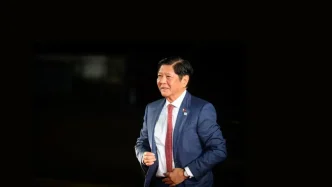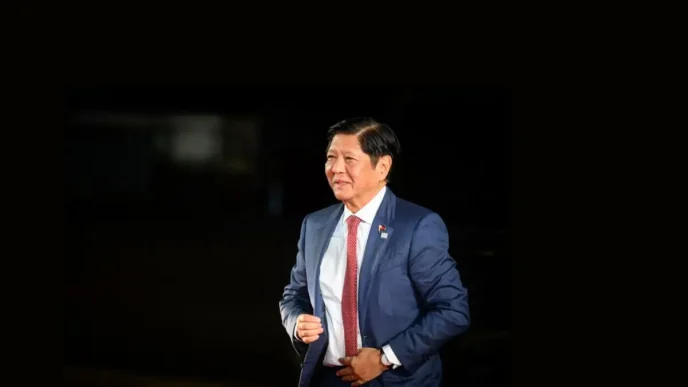In a significant step toward strengthening bilateral ties, ministers from India and Singapore have engaged in high-level discussions to explore deeper cooperation in digitalization, skills development, and industrial park projects. The talks, held recently in Singapore, underscore a mutual commitment to harnessing technology and human capital as cornerstones of economic growth, reflecting a shared vision for innovation-driven progress in the region.
Building a Digital Future Together
The ministerial dialogue focused heavily on digitalization as a transformative force for both nations. Singapore, a global leader in smart city initiatives and digital infrastructure, offers a model that India, with its rapidly growing tech sector, is keen to emulate. Discussions centered on potential collaborations in areas such as digital payments, cybersecurity, and data governance. Both sides expressed interest in sharing best practices to accelerate digital transformation, particularly in India’s vast and diverse market.
Officials highlighted the importance of aligning regulatory frameworks to facilitate seamless cross-border digital trade. This comes at a time when India’s digital economy is projected to contribute significantly to its GDP, driven by initiatives like Digital India. Singapore’s expertise in creating a robust digital ecosystem could provide valuable insights as India scales its infrastructure to support millions of new internet users. While specific agreements have yet to be finalized, the intent to collaborate on digital innovation signals a promising trajectory for both economies.
Beyond government-to-government cooperation, the talks also explored public-private partnerships to drive digital innovation. Singapore’s established tech hubs and India’s burgeoning startup ecosystem present opportunities for joint ventures in areas like fintech and artificial intelligence. Such collaborations could not only boost economic output but also create jobs, addressing a critical need in India’s labor market.
Skills Development: Bridging the Talent Gap
Another key pillar of the discussions was skills development, with both nations recognizing the urgency of preparing their workforces for a technology-driven future. Singapore’s advanced vocational training programs and India’s ambitious National Skill Development Mission were identified as complementary frameworks for collaboration. The ministers discussed potential exchange programs, joint certification initiatives, and training modules tailored to emerging industries such as renewable energy and advanced manufacturing.
For India, partnering with Singapore offers access to cutting-edge training methodologies that could enhance employability among its vast youth population. Meanwhile, Singapore stands to benefit from India’s large pool of talent, particularly in IT and engineering, to address labor shortages in specialized sectors. This mutual exchange of expertise could serve as a model for other countries in the region looking to upskill their populations amid rapid technological change.
The focus on skills also ties into broader regional goals under frameworks like the ASEAN-India partnership, where human capital development is seen as critical to sustaining economic growth. By aligning their efforts, India and Singapore could play a leading role in shaping a more competitive and resilient regional workforce.
Industrial Parks: A Hub for Innovation and Investment
The development of industrial parks emerged as a third area of focus, with discussions aimed at creating integrated spaces that combine manufacturing, research, and logistics. Singapore’s experience in establishing efficient industrial zones, such as the Jurong Island petrochemical hub, provides a blueprint for India, which is seeking to bolster its manufacturing sector under the “Make in India” initiative. The ministers explored how joint ventures in industrial park development could attract foreign direct investment and foster innovation.
These industrial parks are envisioned as ecosystems where businesses from both countries can collaborate on high-value projects, particularly in sectors like pharmaceuticals, electronics, and green technology. Such initiatives could also strengthen supply chain resilience, a priority for both nations in the wake of global disruptions caused by the pandemic and geopolitical tensions. While specific locations and timelines for these projects remain under discussion, the commitment to shared infrastructure development marks a tangible step forward in economic cooperation.
Moreover, these industrial zones could serve as testing grounds for sustainable practices, aligning with both countries’ commitments to climate goals. Singapore’s emphasis on green urban planning and India’s push for renewable energy adoption could converge in the design of eco-friendly industrial parks, setting a precedent for environmentally conscious economic development in the region.
Strategic Context: A Partnership Rooted in Shared Goals
The recent ministerial talks build on a long-standing relationship between India and Singapore, grounded in strategic and economic alignment. Singapore has been a key partner in India’s Act East Policy, serving as a gateway to Southeast Asia through trade and investment. Conversely, India’s growing market and geopolitical significance offer Singapore opportunities to diversify its economic engagements beyond traditional partners.
This partnership gains added relevance amid shifting global dynamics, including supply chain reconfigurations and the digital revolution. As major economies pivot toward technology and sustainability, India and Singapore are positioning themselves as leaders in these domains. Their collaboration could have ripple effects across the Indo-Pacific, fostering greater regional integration and economic stability.
Economists note that the synergy between India’s scale and Singapore’s efficiency creates a unique opportunity to drive innovation at a regional level. While India brings demographic dividends and a vast consumer base, Singapore contributes world-class infrastructure and a business-friendly environment. Together, they could catalyze growth not just bilaterally but across ASEAN and beyond, reinforcing the importance of South-South cooperation in a multipolar world.
Challenges and Opportunities Ahead
Despite the optimism surrounding these discussions, challenges remain in translating dialogue into action. Regulatory harmonization, particularly in digital governance, requires navigating complex legal and cultural landscapes. Intellectual property rights, data privacy laws, and cybersecurity standards differ significantly between the two nations, necessitating careful negotiation to ensure mutual benefit.
Additionally, while skills development initiatives hold immense potential, implementation must account for disparities in educational systems and labor market needs. Tailoring programs to address specific industry demands will be critical to ensuring that training translates into employment opportunities. Both governments will need to engage with private sector stakeholders to align initiatives with market realities.
On the industrial parks front, land acquisition, funding, and geopolitical considerations could pose hurdles. India’s federal structure means that state governments play a significant role in such projects, requiring coordination across multiple levels of governance. Singapore, with its more centralized system, may need to adapt to these complexities to ensure smooth collaboration.
Yet, the opportunities outweigh the challenges. If successful, these initiatives could serve as a template for other bilateral partnerships in the region, demonstrating how complementary strengths can drive shared prosperity. The focus on digitalization, skills, and industrial development also aligns with global trends toward innovation and sustainability, positioning India and Singapore at the forefront of economic transformation.
A Forward-Looking Partnership
As India and Singapore deepen their collaboration, the implications extend beyond their borders. Their joint efforts in digitalization, skills development, and industrial parks could reshape economic interactions across Asia, setting new standards for technology-driven growth and regional cooperation. While the path ahead involves navigating logistical and policy challenges, the commitment displayed by both sides suggests a readiness to tackle these issues head-on.
The ministerial talks mark not just a milestone in bilateral relations but a broader signal of intent to lead in a rapidly evolving global economy. As these initiatives unfold, their impact on trade, innovation, and human capital in the region will be closely watched, with the potential to inspire similar partnerships elsewhere. For now, the focus remains on turning discussions into deliverables, a process that could redefine economic ties between two of Asia’s most dynamic players.















